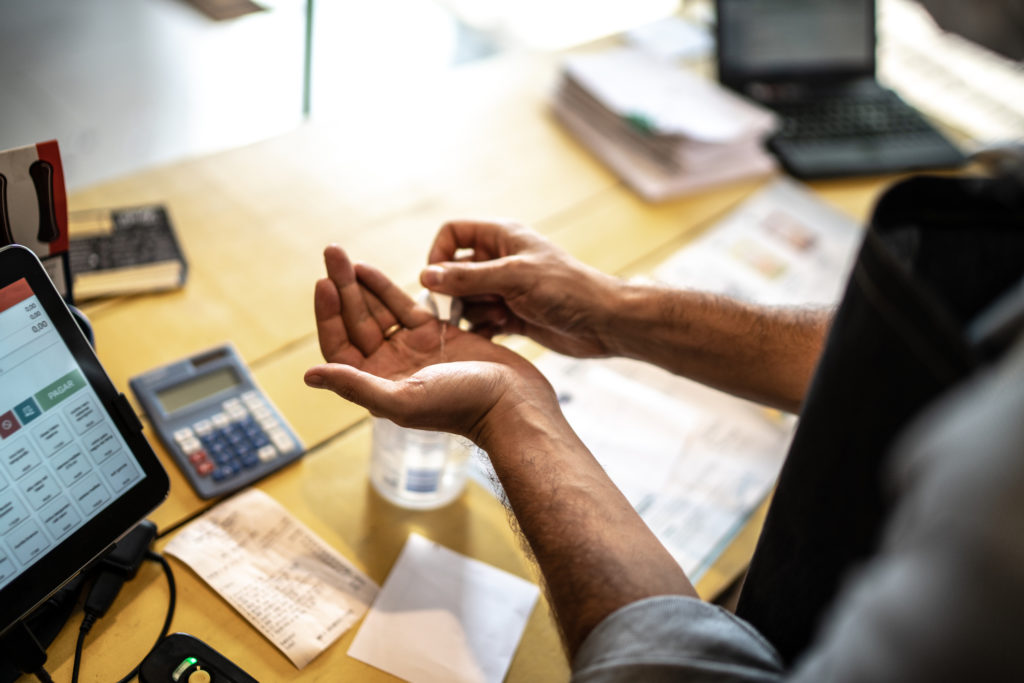Operating under the shadow of the COVID-19 pandemic, brick-and-mortar retail stores that remain open in Canada must contend with a difficult business environment while doing their best to keep customers and staff healthy and safe.
As a store owner or manager, you must take precautions that begin with an awareness of coronavirus symptoms. Store staff should not come into work—but stay at home and self-isolate for a couple of weeks until all symptoms are resolved—if they:
- Exhibit any COVID‐19-like symptoms, such as a sore throat, headache, fever, sneezing, coughing or shortness of breath.
- Have travelled internationally.
- Live in the same household as a confirmed or clinical COVID-19 case who is self-isolating.
Promote Safe Practices
To keep staff and customers safe, you should consider putting up signage and posters in the retail space to alert workers of any signs and symptoms of acute respiratory illness; and to promote hand-washing and respiratory hygiene.
You should also have alcohol-based hand sanitizer and tissues available at strategic places throughout the store, for both staff and customers. (And washrooms should also be well stocked with soap and paper towels/hand dryers.)
Employees should be encouraged to:
- Wash their hands often.
- Avoid touching their eyes, nose and mouth.
- Cover their cough and sneeze with a tissue or into their arm, not their hand.
- Stay home if they are sick.
- Avoid visiting people in hospitals or long-term care centres if they are sick.
- Avoid travelling abroad.
Keep a Safe Distance
Social distancing—staying two metres or six feet apart—is an important practice to enforce for both staff and customers. This can be challenging if your retail space is small and/or a lot of customers want to come inside.
So your staff should space themselves around store to maintain a safe distance from everyone else, unless they are protected by a barrier such as a Plexiglass shield at checkout.
It’s a good idea to notify customers of your social distancing measures with a notice on your front door. And then limit the number of customers allowed into the store at once, having those waiting line up outside, with the proper distance between them marked with tape on the ground, for example.
Some stores might even consider reducing their hours of operation to help minimize the chance of infection.
Clean and Sanitize Facilities
Cleaning staff and employees should be asked to clean more often and more thoroughly, paying special attention to high-touch surfaces, such as:
- Keyboards, tablets and computer mice
- Phones
- Elevator buttons and door handles
- Payment terminals
When cleaning and sanitizing your point-of-sale terminal:
- Turn off the terminal and disconnect it from the power source.
- Dampen a mircofibre cloth and use it to wipe down the terminal (don’t put water directly on this electric device).
- Do not use any solvents or detergents or abrasive cleaners.
- After you clean the terminal, use an alcohol-based wipe or disinfectant on the microfibre cloth.
Use a Contactless Payment Solution
One of the best ways to make store checkouts safer is to use contactless payment methods rather accepting cash. This tap-and-pay solution enables customers to make their purchases with their cards or the mobile wallets of their smartphones, without coming into contact with surfaces that could be contaminated with COVID-19.
If you cannot currently accept contactless payments, but already take EMV chip cards, the set-up process should be straightforward. Contact Payfirma, [email protected] or 1 (800) 747-6883, for more information.
And you will be happy to hear that contactless payments are one of the most secure ways to pay for orders. They are powered by the same technology that EMV “chip” cards use, making it nearly impossible for criminals to counterfeit. They also rely on an advanced technology called tokenization to secure every transaction.
Contactless payments made by smartphone have additional security precautions with multi-layered and biometric authentication, using a unique identifier, such as a fingerprint or face scan, or a PIN, for approval.
To manage store distancing and traffic and improve customer experience, some merchants are offering telephone or online orders with curbside pick-up or delivery options.
Payfirma is proud to support Canadian businesses, especially in this difficult time.
If you are interested in setting up a Virtual (Web) Terminal or any other payment processing solution, please email [email protected] or call 1-800-747-6883.
